I Am Setsuna Original Soundtrack
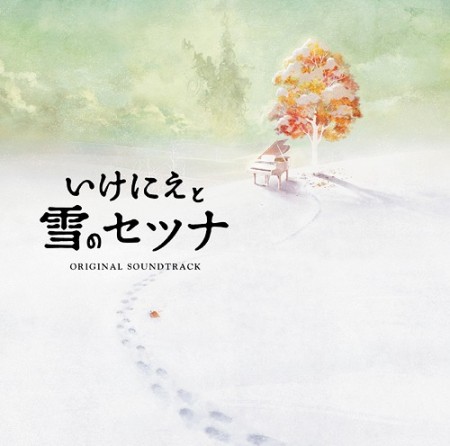 |
Album Title: I Am Setsuna Original Soundtrack |
| Record Label: Square Enix Music |
|
| Catalog No.: SQEX-10539 |
|
| Release Date: March 23, 2016 |
|
| Purchase: Buy at CDJapan |
Overview
Developed by Tokyo Factory, a new studio under Square Enix, I am Setsuna draws its inspiration from the “golden era” of JRPGs, the 90s. Its battle system is heavily drawn from Chrono Trigger, a game specifically credited by the studio. The central theme of the game is “sorrow”, evident in the title and name of the heroine, as Setsuna means sadness or sorrow in Japanese. The music for the game was composed by Tomoki Miyoshi, whose previous credits include the cinematic music for SoulCalibur V and the score for Majin Station. To fit the game’s melancholic setting, Miyoshi has written a score almost entirely made up of solo piano pieces, except a few with added percussion. The piano parts are performed by Randy Kerber.
Body
The soundtrack begins with the minimalist “The Beginning of the End”, focusing on a minor melodic line supported by sparse chords in the higher register, exuding a brooding melancholy, aptly setting the tone for the rest of the soundtrack. The melody of this piece will recur throughout the soundtrack. “Voyage” contrasts the different registers of the piano by layering them with the melodic line floating high above the repeating patterns of the bassline. “The Scent of the Sea” takes on a bittersweet mood as the piece fluctuates between major and minor tones, while the left hand switches between chords and flowing phrases. “Tender Glow” is composed in the waltz rhythm but the piece started out the first section without the third beat typical of waltz, subduing the buoyant swing. But the variation of the first section that followed made use of the full three-beat waltz rhythm and doubled up the notes in the melody for a fuller harmony.
“Into the Woods” is a piece composed for four hands on a piano. The bottom hands serve a supporting role playing either a chordal or legato pattern while the top hands play the melody in the ringing higher register. “No Turning Back” is the main battle track of the game and also the first in the soundtrack to feature percussions as well. The addition of percussion adds much more momentum to the rhythmic and spirited piano parts. “Deadly Gamble” is an interesting short piece that makes use of dissonance and dotted rhythm to create a sense of unease. “March of the Brave” uses a repeating 2-note pattern on the left hand to simulate a rigid marching rhythm, but the piece transitions into a fluid second section with fluid notes.
“Silent Snow” uses a repeating on the upper register to paint an image of airy falling snow while a sombre melody is carried in the middle register supported by chords in the lower register to add more depth to the piece. Accentuated by the supporting percussion, “Relentless Advance”, as the title suggests, proceeds with an unforgiving momentum with repeating motifs delivered rapidly. “A Moment of Respite” is the victory fanfare used in the game after battle, and the piece samples the “Victory Fanfare” from Final Fantasy (not the iconic jingle in the beginning, but the section after the jingle). “The Secret Passage” uses a sparse ringing melody in the higher register to create a mysterious feeling. While the left hand started with legato phrases in the middle register, later it ventures into the lower register with chordal patterns to increase the depth of the sound.
“A Fantastic Encounter” uses the layering of sounds from different spectrum as well as the percussion to create an intricate piece with a vigorous complexity. On the piano, a ringing rapid motif floats above the melody played in the middle range, with a droning bassline resonating in a much deeper register. “Lighthearted” is one of the few cheerful piece in the soundtrack that is entirely based on a major key. The piece utilizes a bouncy staccato left hand accompaniment to support the playful melody. “Dark Caves” with broken chordal pattern in minor keys in the higher range accentuated by single low resonant notes to create an ominous atmosphere, but the tone of the piece changes to more sorrowful as the melody comes in unobtrusively.
Disc 2 opens with a high spirited piece with “Rare”, which utilizes rapid repeating chords to generate the momentum from the outset, but the chords dropped out briefly to give the melody the spotlight before the piece loops. “Ruins” is another piece making use of constant repeating chords, but at a more relaxed pace, and the dynamics of the repeating chords grow and fade throughout the piece to create a spatial sense. In “The King’s Valley”, the right hand takes the chords while the left hand plays a booming bassline in the low range of the piano, resulting in a sonorous tone throughout the piece.
“Distant Islands” features a memorable tranquil melody with a simple monophonic accompaniment, simple yet elegant. “Walking through the maze of time” features a rather scalar melody against an arpeggio accompaniment line, forming a rather interesting contrast. The rhythmic and forceful playing of the piano’s extreme low register in “Hidden Danger” is almost percussive, and gives the piece a dire sense of pressure when combined with the percussion. “Inside the Beast” is another piece that utilizes the disparity of the tone between the low and high range of the piano to create an interesting sonic visual, with a big void in the middle range.
The recurring melody makes a return in “Winter Journey’s Tale” as the piece begins by juxtaposing the melody with a rapid repeating pattern in the higher register, giving it a rather airy and mystical feel, before shifting to the warmer timbre of the lower middle register for a more affecting sound. “Staff Roll” is the only piece with vocals, provided by kotringo, in the entire soundtrack, albeit her vocals are only used for a short section in the beginning as an introduction to the recurring motifs that made up the rest of the piece. The overall arrangement of the piece is rather serene, mostly using the higher register of the piano with simple left hand accompaniment.
Summary
Through a score created based almost entirely on piano alone, with the occasional insertion of percussion for the battle pieces, Tomoki Miyoshi has demonstrated the versatility of piano and also his capability to compose using the instrument. The impressive range of timbral and emotional colours displayed in I Am Setsuna Original Soundtrack mostly through a single instrument makes it a unique and cohesive listening experience quite unlike anything I have heard recently. There are at times when I feel some pieces are too similar to one another, but those instances are far in between. If viewed from a technical standpoint, Miyoshi has not created any virtuosic masterpiece like those from the Piano Opera, but rather he focused on drawing out the most from the entire range of timbre of the instrument, which worked to his advantage. Unless you belong to the rare group of people who despise the tone of a piano (I do have such a friend), most would probably find plenty to enjoy out of I Am Setsuna Original Soundtrack.
Do you agree with the review and score? Let us know in the comments below!
4
Posted on May 27, 2016 by KT Wong. Last modified on May 27, 2016.

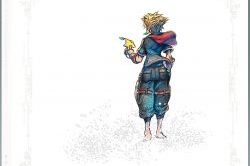
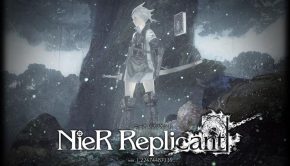
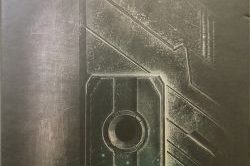
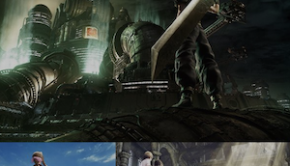










Having watched some of the gameplay on Twitch, I have to say that the transitions between the battle songs and track 9, “Astounding Victory” are seamless and really reinforces the presence of the piano score. You’ll notice on the album cover that the piano takes the place of the main character on the game’s cover. The piano represents Setsuna, in all of her challenges and struggles. I’ve said it before, and I’ll say it again. This score is going to be huge in the West this fall once us Chrono Trigger fans get to play the English release! Great review.
Thanks for the comment Ryan. I didn’t write the review (nor have I played the game), but it’ll be interesting to see what everyone thinks of the game. Aside from the battle system, not sure how much Chrono Trigger influence is there, but will still play it. I am a bit apprehensive that the only snow environment and only piano music will blend together a bit too much, as I, unlike KT, thought that the music, while nice, blended together too much over an extended listen, despite its range and versatility in capturing various emotions. Was also surprised to see so many FF references, sometimes even note for note, within the score, which I felt was a bit unoriginal, regardless of who the publisher of the game was.